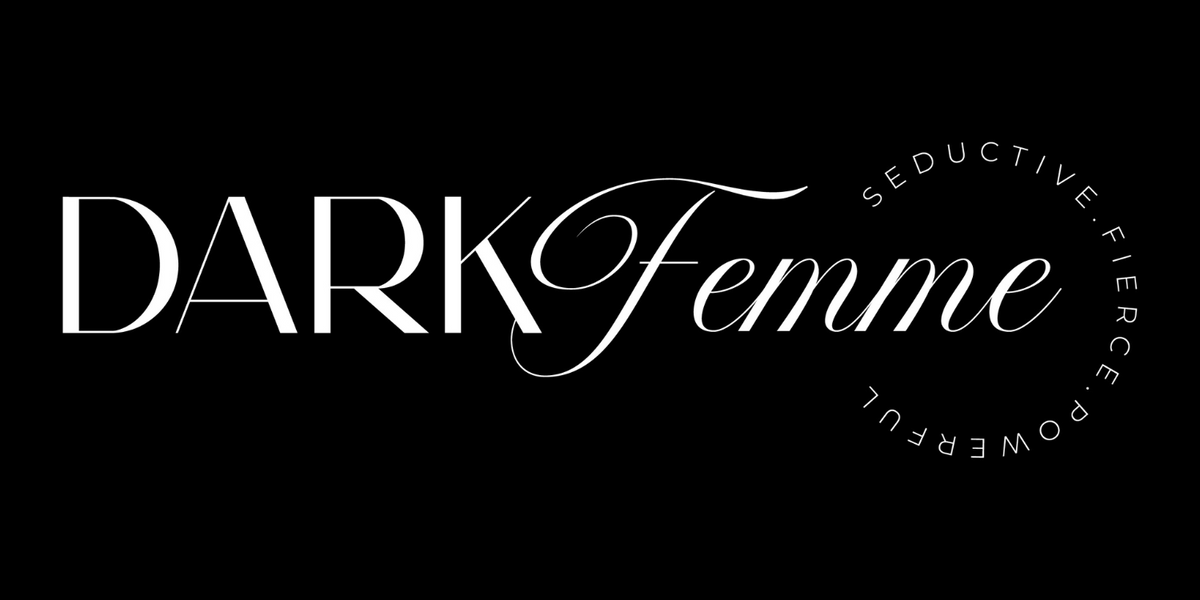
Nearly 60 percent of all fashion purchases now happen online, changing not just where women shop but how they define personal style. Digital storefronts offer more than convenience—they invite shoppers into a space where trends move faster, choices multiply, and anyone can access global designers in seconds. This article takes you through the powerful ways ecommerce is shaping modern fashion, revealing its influence on accessibility, creativity, and the entire shopping experience.
Table of Contents
- Defining Ecommerce’s Role in Modern Fashion
- Major Ecommerce Models in Fashion Industry
- Enhancing Consumer Experience Through Technology
- Influence on Fashion Trends and Accessibility
- Key Challenges and Risks for Fashion Ecommerce
Key Takeaways
| Point | Details |
|---|---|
| Ecommerce Transforms Fashion Interaction | Online platforms enhance consumer experiences through personalized recommendations and interactive technologies, fostering deeper engagement and style exploration. |
| Diverse Ecommerce Models Emerge | Various models like DTC, marketplaces, and dropshipping cater to different consumer needs, offering flexibility and expansive options. |
| Technological Innovations Enhance Shopping | Advancements such as AR fitting rooms and AI-driven recommendations create immersive shopping experiences that bridge the gap between digital and physical retail. |
| Challenges Demand Strategic Adaptation | Fashion ecommerce faces challenges like cybersecurity risks and inventory management complexity, necessitating proactive strategies and continuous innovation. |
Defining Ecommerce’s Role in Modern Fashion
Ecommerce has fundamentally transformed how women discover, interact with, and purchase fashion. More than just a transactional platform, online fashion retail has become a dynamic ecosystem where style meets technology, empowering consumers to explore trends, express personal identity, and access global fashion instantaneously. Understanding the Role of Trends in Bold Fashion reveals how digital platforms have revolutionized traditional shopping experiences.
At its core, modern fashion ecommerce represents more than simple product sales. It’s a comprehensive experience that combines visual storytelling, personalized recommendations, and seamless purchasing journeys. Consumers now expect interactive interfaces that allow them to virtually try on clothing, receive instant styling advice, and customize their shopping experience. Websites like Dark Femme leverage advanced technologies to create immersive digital environments where fashion is not just consumed but experienced.
The technological infrastructure behind contemporary fashion ecommerce enables unprecedented accessibility and convenience. Key features that define this new landscape include:
- Real-time inventory tracking
- Personalized size recommendations
- Flexible payment options
- Instant style consultations
- Transparent return policies
- Social media integration
By bridging the gap between physical and digital retail, ecommerce platforms have democratized fashion access. Young, fashion-forward consumers can now explore diverse styles, discover emerging designers, and curate unique wardrobes without geographical limitations. Contemporary Women’s Fashion Guide demonstrates how digital platforms have expanded fashion’s creative boundaries, making style more inclusive and experimental than ever before.
Major Ecommerce Models in Fashion Industry
The fashion industry has rapidly evolved digital strategies, developing multiple sophisticated ecommerce models that cater to different consumer needs and business objectives. What are Bestsellers in Fashion? highlights the dynamic nature of these emerging platforms. According to research from Villanueva, three primary ecommerce models dominate contemporary fashion retail: direct-to-consumer, marketplace, and dropshipping strategies.
Direct-to-consumer (DTC) models represent a transformative approach where brands like Dark Femme bypass traditional retail intermediaries. By controlling their entire digital ecosystem, these platforms offer personalized shopping experiences, transparent pricing, and direct customer engagement. Research from SO06 indicates that such models provide significant competitive advantages by enabling deeper customer relationships and more agile response to emerging fashion trends.
The key ecommerce models in fashion include:
- Direct-to-Consumer (DTC): Brands sell directly through their own platforms
- Marketplace Model: Multiple brands sell through a centralized online platform
- Dropshipping: Retailers sell products without holding physical inventory
- Subscription-Based: Recurring delivery of curated fashion items
- Social Commerce: Selling directly through social media platforms
Each model offers unique advantages for fashion brands and consumers.
Marketplaces provide extensive product variety, dropshipping minimizes inventory risks, and social commerce leverages powerful engagement tools. By understanding these models, fashion brands can strategically select approaches that align with their target audience’s preferences and technological expectations.

Enhancing Consumer Experience Through Technology
Technology has revolutionized the fashion ecommerce landscape, transforming how consumers interact with online shopping platforms. According to research from IADIS Portal, innovative digital tools are dramatically improving the online shopping experience by addressing traditional barriers like product visualization and sizing uncertainties. Modern fashion platforms now leverage advanced technologies to create immersive, personalized shopping experiences that bridge the gap between digital and physical retail.
Key technological innovations are reshaping consumer interactions in profound ways.
 Ideas Research highlights how emerging marketing technologies are integrating online and offline strategies, creating more dynamic and engaging shopping environments. These technologies enable features like virtual try-ons, AI-powered style recommendations, and real-time customization that were unimaginable just a few years ago.
Ideas Research highlights how emerging marketing technologies are integrating online and offline strategies, creating more dynamic and engaging shopping environments. These technologies enable features like virtual try-ons, AI-powered style recommendations, and real-time customization that were unimaginable just a few years ago.
The most impactful technological enhancements in fashion ecommerce include:
- Augmented Reality (AR) fitting rooms
- AI-driven personalized styling recommendations
- Interactive size and fit calculators
- 360-degree product visualization
- Real-time inventory and styling suggestions
- Personalized visual merchandising
By embracing these technological innovations, fashion brands can create more intuitive, engaging, and personalized shopping experiences. The goal is no longer just selling products, but crafting memorable digital interactions that make consumers feel understood, valued, and empowered in their fashion choices. Technology transforms ecommerce from a transactional platform to an immersive, interactive journey of personal style exploration.
Influence on Fashion Trends and Accessibility
Ecommerce has fundamentally transformed the fashion landscape, democratizing style and breaking down traditional barriers to trendsetting and personal expression. What is Fashion-Forward Attire? captures the essence of this digital revolution. According to research from DOAJ, online platforms have dramatically expanded fashion accessibility, enabling emerging designers and local creators to reach global audiences that were previously inaccessible.
The digital marketplace has reshaped how fashion trends emerge and propagate. JSR Research highlights how ecommerce has disrupted traditional supply chain dynamics, allowing for more rapid trend cycles and immediate consumer feedback. These platforms enable instant trend transmission, with social media and online marketplaces acting as accelerators for style innovation, making fashion more dynamic and responsive than ever before.
Key ways ecommerce influences fashion trends and accessibility include:
- Democratizing design exposure for emerging creators
- Reducing geographical limitations on fashion discovery
- Enabling real-time trend tracking and consumer feedback
- Providing platforms for niche and alternative fashion styles
- Offering personalized style recommendations
- Creating direct connections between designers and consumers
By eliminating traditional gatekeeping mechanisms, ecommerce has transformed fashion from a hierarchical industry to a collaborative, inclusive ecosystem. Consumers now have unprecedented power to discover, influence, and shape trends, breaking down the barriers that once restricted style exploration and personal expression.
Key Challenges and Risks for Fashion Ecommerce
Fashion ecommerce, while transformative, presents a complex landscape of strategic challenges that require nuanced navigation. What is Slow Fashion? underscores the intricate balance between innovation and risk. According to Scientiam Research, successful fashion ecommerce demands rigorous market research, sophisticated statistical analysis, and advanced predictive modeling to anticipate rapidly evolving consumer preferences.
The digital marketplace introduces multifaceted risks that extend beyond traditional retail constraints. Rutgers Business Research highlights how ecommerce disrupts established supply chain models, creating unprecedented challenges for fashion businesses. These risks manifest through complex technological, operational, and consumer engagement dimensions that require strategic adaptation.
Key challenges and risks in fashion ecommerce include:
- Technological Infrastructure vulnerabilities
- Cybersecurity and data protection concerns
- Inventory management and forecasting complexity
- Customer experience personalization limitations
- Return and exchange policy management
- Sizing and fit accuracy challenges
- Competitive pricing and margin pressures
Navigating these challenges requires a proactive, innovative approach. Successful fashion ecommerce platforms must continuously evolve their strategies, leveraging technology, data analytics, and consumer insights to mitigate risks and create seamless, engaging digital shopping experiences that meet the dynamic expectations of modern consumers.
Elevate Your Fashion Game with Ecommerce Innovation
The journey of navigating fashion ecommerce’s complex landscape can feel overwhelming with challenges like fit accuracy and personalized styling. This guide highlights how digital platforms must create immersive experiences that empower your bold style choices and help you truly express yourself. At Dark Femme, we understand that you want more than just shopping—you want an experience tailored just for you with seamless fit, trend-forward designs, and direct access to statement pieces.
Explore collections designed to meet your fashion needs with options like Dresses | Feminine Fashion Boutique – DARK Femme, featuring multiple sizes and bold styles that embody confidence and flair.

Embrace the future of fashion ecommerce today by discovering our BEST SELLERS | FEMMINE FASHION BOUTIQUE – DARK Femme, offering top-rated pieces that meet the highest standards of quality and style. Visit https://darkfemme.com to shop now, enjoy flexible payments, free shipping on qualifying orders, and free returns. Be unapologetically yourself and start your personalized fashion journey with Dark Femme now.
Frequently Asked Questions
How has ecommerce transformed the fashion industry?
Ecommerce has revolutionized the fashion industry by allowing consumers to discover and purchase styles globally, enhancing accessibility and personal expression while merging technology with shopping experiences.
What are the key ecommerce models in the fashion industry?
The primary ecommerce models in fashion include Direct-to-Consumer (DTC), Marketplace, Dropshipping, Subscription-Based, and Social Commerce, each offering unique advantages for brands and consumers.
How do technological innovations improve the online shopping experience in fashion?
Technological advancements such as augmented reality, AI recommendations, and interactive product visuals enhance customer interaction, making online shopping more immersive, personalized, and engaging for fashion enthusiasts.
What challenges do fashion ecommerce platforms face?
Fashion ecommerce platforms encounter challenges including inventory management, cybersecurity threats, maintaining personalized customer experiences, and competing in a rapidly evolving digital marketplace.





